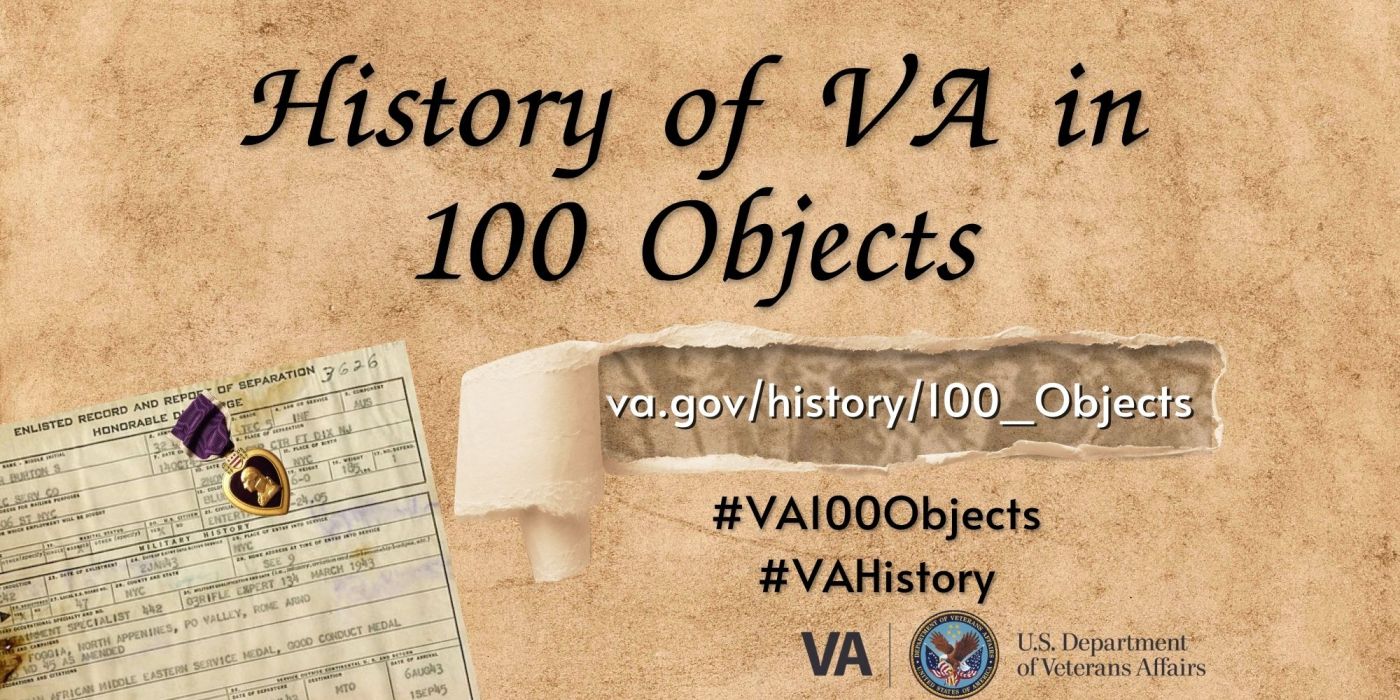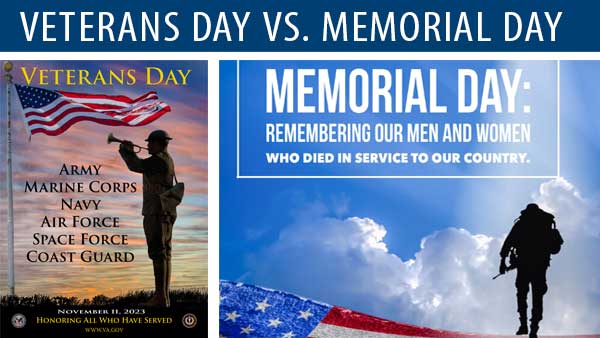If you wanted to create an album of your family’s history but were limited to 100 items, what would you put in it and what would you leave out? These were the central questions that the VA History staff asked while compiling the “History of VA in 100 Objects” virtual exhibit.
The exhibit tells the history of the nation’s efforts to honor and reward Veterans for their services by spotlighting individual objects that illuminate key parts of that story.
We will be rolling out the exhibit in stages on the VA History website. The first entry is about bounty land warrants, one of the earliest – and now largely forgotten – benefits offered to Veterans. The second entry features the visitor’s register from the Fort Scott National Cemetery in Kansas. Two additional entries will follow each week.
While 100 is a big number, that gives us an opportunity to explore many different aspects of VA history. The exhibit makes no claim to being comprehensive (we would need far more than 100 objects to do that). Instead, the people, places, events and physical artifacts featured in the exhibit present a kaleidoscopic picture of VA’s past. The Department, in its current form, is a relatively young agency, but the tradition of providing benefits, medical care and memorial services to Veterans dates back several centuries.
The 100 Objects exhibit ranges across this timeline, from the earliest laws governing disability claims for Revolutionary War soldiers to the latest practices to protect VA workers and Veterans from the COVID-19 pandemic. Entries will be published on the website each week in no particular chronological order, which may lead to some unusual pairings. Don’t be surprised one week if an entry on a pension application from a War of 1812 widow appears alongside another on the cardiac pacemaker pioneered by VA researchers in the 1950s.
We have also made space in the exhibit for the unusual and the offbeat. An item such as the cranberry glass toothpick holder from the National Home for Disabled Volunteer Soldiers in Dayton, Ohio, might seem like a mere curio. The same might be said of the late 19th century cemetery deed or the photo of clerks at one of VA’s predecessor organizations, the Bureau of War Risk Insurance, laboring away in temporary workspace at the Smithsonian Museum of Natural History during World War I. But large or small, these objects provide a window into the past and they have a meaningful story to tell.
In researching this exhibit, we scoured our virtual archives and collections to come up with the 100 objects. We invite readers to submit their own suggestions of objects to include in the exhibit. Send your ideas to VAHistoryOffice@va.gov. If we use your proposal we will give you full credit in the text when your object is published on the website.
We hope you will join us on our journey through VA’s history, object by object. In addition to serving as a vehicle to explore the past, the exhibit is also meant to offer a glimpse into the future that will be realized when the National VA History Center opens its doors in Dayton, Ohio, in 2026. Once completed, the center will include several thousand square feet of exhibit space for many of our historical artifacts. The History of VA in 100 Objects virtual exhibit provides a preview of the much greater things to come.
Topics in this story
More Stories
Memorial Day, which is observed on the last Monday in May, was originally set aside as a day for remembering and honoring military personnel who died in the service of their country, particularly those who died in battle or as a result of wounds sustained in battle.
The lineage of what's now known as the Department of Veterans Affairs is rooted in the nation’s earliest efforts to reward Veterans for their service and sacrifice.
VA's Congressional Liaison Service (OCLA), responsible for keeping Congress informed on all things VA, reaches a milestone.






I am a veteran who need legal help, the State of New Jersey is violating their own statutes and laws. “Eli Lilly & Co. vs. Sav-On- Drugs Inc. 366 U.S. 276 (1961), N.J.S.A 14A: 13-4 , and N.J.S.A. 14A: 13-11 took my home, put me in prison and now I am homeless.